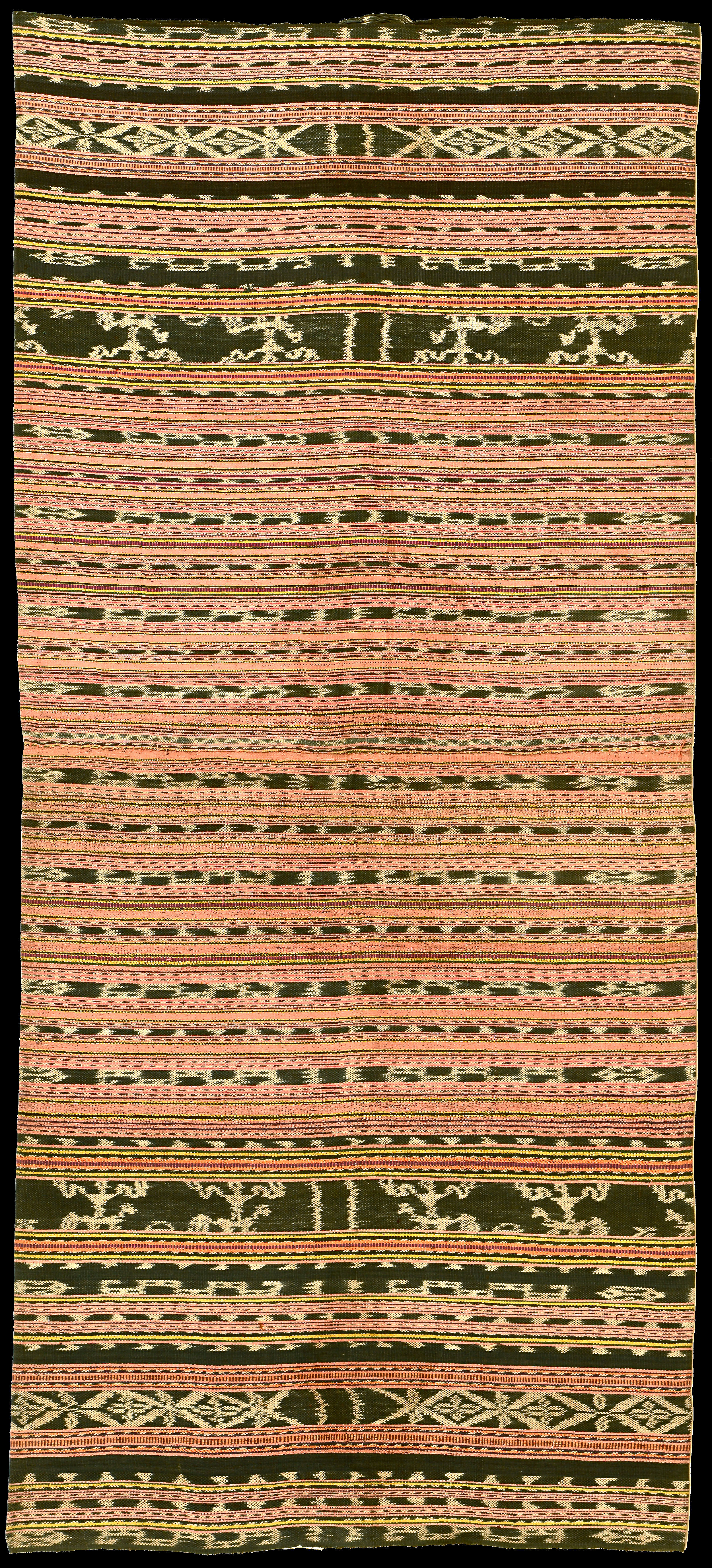| |
 mouse over to magnify mouse over to magnify
| | | | 271 Moluccas, Romang
Sarong
| | Locale: | The island's name is also written as Roma. | | Period: | 1920-1940 | | Panels: | 2 | | Design: | Numerous ikated bands, the four widest carrying the main motifs. The only figurative motif shows a horse and rider, depicted in a manner similar to that seen in the rimanu motifs of the Kisar and Luang aristocracy. The second most important bands are decorated with lozenges filled with crosses. The red may have been dyed with sappan rather than morinda, as the required tree, Caesalpinia sappan (the leaves of which are the sustenance of the larvae of Polyura Billberg butterflies) is reported to grow on the island. | | Size: | 70 x 158 cm (27.5 x 62.2 in) | | Weight: | 850 g (384 g/m2) | | Yarn: | Cotton, hand-spun, medium | | Comment: | As far as known the only published Romang ikat textile - if that is what it is. Provenance provided by Verra Darwiko, generally considered a reliable informant on Moluccan textiles, but on the basis of stylistic elements it could also have been made on Luang or even Babar. We follows the counsel of Ruth Barnes: when in doubt about the provenance of old cloths, accept the one it came with as it is likely to be correct. Microscopic photography reveals hand spun cotton only. Natural dyes in the ikated bands and stripes, synthetic dyes in the pinstripes - conform the practice on most islands in the region since roughly 1880. The three-fold repeat of the motif in the second most prominent ikat bands is a feature more commonly found on rather distant Savu and Raijua, e.g. PC 231, though also found on Wetar sarong PC 268. Ex collection J.B. Lüth. | | Background: | Additional information in chapters on Moluccas and Romang. | | Published: | Ikat Textiles of the Indonesian Archipelago, 2018.
Timor: Totems and Tokens, 2019.
| | Compare: | 091 272 278 | | Sources: | Depicted in Khan Majlis, Woven Messages, Fig. 315, dated '2nd half 20th c.' - which we believe to be too conservative. Similar to circa 1910 sarong from nearby Luang depicted in Khan Majlis, Indonesische Textilien, Wege zu Goettern und Ahnen, Fig. 543, which was made for export to Timor, and to sarongs, both dated 'ca. 1910' on Fig. 546 and 549. Remarkable is that the unusual colour palette, with its pinks and peach tones, is also very similar to that of the Luang sarong on Fig. 543. Figurative motifs also similar to those on circa 1900 Babar sarong on Fig. 558. Lozenges with elaborated crosses similar to those on circa 1913 Babar sarong, Fig. 560. | | |
 ©Peter ten Hoopen, 2025
All rights reserved.
|
|


